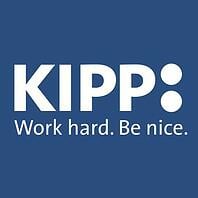RobotLAB Blog
Everything You Need To Know About Robotics in Businesses
NYC bets on the future by reinforcing STEM focus programs
New York, like many cities large and small in this country, wants to build its own answer to Silicon Valley. Unlike many other cities, New York has really leaned into this initiative.
New York persuaded Facebook and Google to open offices in the city. It worked with local business partners to set up high-tech incubation centers to attract new tech jobs. New York also put lots of money where its mouth is by looking to create a new high-tech institution of higher learning and opening several STEM programs in the city's five boroughs.
In 2011 former mayor Michael Bloomberg, convinced that the city’s once dominant financial sector was too volatile to be a dependable economic engine for the city, pushed the city fathers to ante up free land and $100 million in taxpayer funds to a university or a group of universities willing to build a first-rate engineering or tech campus within the five boroughs. The press came to call this his "genius school" initiative. Several big name universities in the science field including the Massachusetts Institute of Technology and Sanford University entered into what amounted to a competition for the honor of being the "genius school". Cornell University in upstate New York won the competition.
- 0 Comments
- Dec 13, 2013 12:03:19 AM
- Posted by Mike Nardine
- Topics: Local News, STEM, Education, Education Politics, School, Middle School
Applying Math curriculum to real life using Google SketchUp
Math in practical use as opposed to being practically useless.
That’s the approach taken by more and more math teachers.
Of course math was always useful in the real world; the trick was convincing your students that that was the case.
Hard to do when the curriculum and available tools limited teachers to books and the blackboard...Oh, and let us not forget transparent plastic protractors for drawing straight lines on paper...at least that’s what most of us used them for.
The only angle we thought about was a guy’s agenda as in “What’s his angle?,” not “the space (usually measured in degrees) between two intersecting lines or surfaces at or close to the point where they meet.”
What’s happened to change all that? Technology!
Technology has made all the difference in turning math class into a learning experience as practical as woodworking or auto repair.
And that's what eighth-graders and their teachers discovered at Upper DuPont Area Middle School in Loyalton, Pa. while undertaking the redesigning and landscaping of the schools courtyard.
- 0 Comments
- Dec 2, 2013 10:55:00 PM
- Posted by Anna Sandler
- Topics: Math, Local News, EdTech, Education, School, Student Engagement
KIPP Founder Sees Correlation Between EdTech and High Test Scores
In today’s RobotsLAB Blog we want to give three Cheers for one of this countries’ most successful ed-tech aware education systems! KIPP! KIPP! HOORAY! and... KIPP! KIPP! HOORAY! and one last time... KIPP! KIPP! HOORAY!

Okay, so that was a bit of a silly opening. But Hip! Hip! Hooray! is so last century and I wanted to get your attention to K-I-P-P, a definitely this-century system of over 140 schools administering to under-resourced communities across the United States. Google “KIPP” and you’ll be amazed at the number of big inner-cities with a KIPP school. (Or go directly to their website: http://www.kipp.org/ )
KIPP by the way, is an acronym which stands for Knowledge Is Power Program. To show how successful KIPP is, take a look at the record of KIPP Los Angeles, the highest performing elementary school in the LA system and one of the top ten in the entire state of California!
- 0 Comments
- Nov 9, 2013 12:42:00 AM
- Posted by Mike Nardine
- Topics: Local News, EdTech, School
Relevant Posts
- Augmented Reality: A Tool for Teaching Students Robot Programming
- Fostering Innovation Through Youth Education in STEM and EdTech
- How Parents Can Foster STEM Learning Beyond the Classroom
- How Robotics Cultivates a Deep Understanding of Mathematics in Students
- RobotLAB Receives EDTech Chronicle 2023 ‘BESTIE’ Award for Landmark Partnership with American Samoa Dept. of Education.
Subscribe to Email Updates
-
I Want To Learn MoreADDITIONAL INFORMATION
